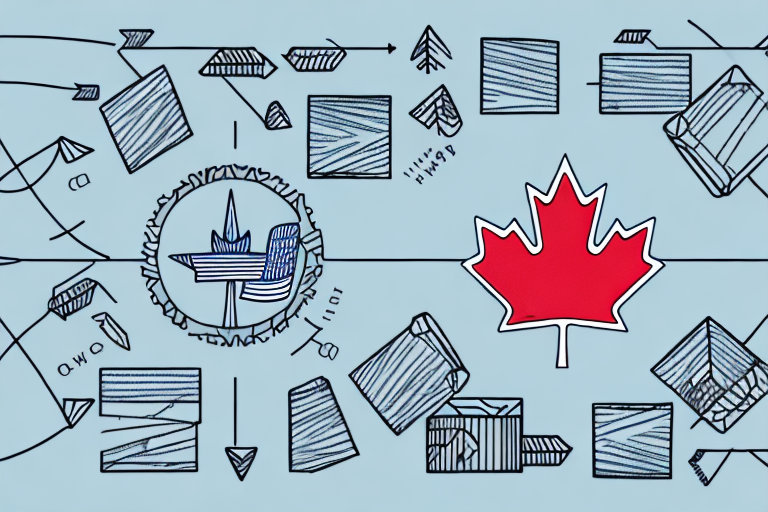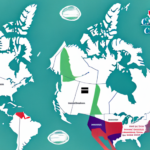Understanding the Difference Between UPS Not Previously Billed Standard and Standard Shipping to Canada
When it comes to shipping to Canada, businesses typically have two main options: UPS Not Previously Billed Standard Shipping and Standard Shipping. Each of these methods offers unique benefits and drawbacks. This article delves into the differences between these two shipping methods, supported by data and industry insights, to help you determine which option best suits your business needs.
What is UPS Not Previously Billed Standard Shipping?
UPS Not Previously Billed Standard Shipping is a service tailored for businesses that require quick and cost-effective package delivery to Canada. Unlike other shipping options, the final cost of the shipment is determined after delivery. The shipper pays an estimated amount upfront and receives a billing statement based on the actual delivery details.
This method is ideal for businesses with a high volume of shipments, allowing them to save on shipping costs without compromising on speed or reliability. Features such as online tracking and delivery confirmation provide added convenience, ensuring that shippers can monitor their packages in real-time.
What is Standard Shipping to Canada?
Standard Shipping is designed for businesses seeking a reliable and predictable shipping rate to Canada. The cost is calculated upfront based on weight, dimensions, and distance, providing consistency in budgeting and financial planning.
This option is particularly beneficial for businesses shipping lightweight items on a regular basis. While it may take longer than expedited services, typically utilizing ground transportation, it remains a cost-effective solution for non-urgent deliveries. Businesses can still track their shipments through the carrier's website, ensuring transparency throughout the shipping process.
UPS Not Previously Billed Standard vs. Standard Shipping: Key Differences
The primary distinction between UPS Not Previously Billed Standard Shipping and Standard Shipping lies in the cost determination and delivery speed. With UPS Not Previously Billed, the final cost is only known post-delivery, offering faster transit times. In contrast, Standard Shipping provides a fixed cost from the outset, which is advantageous for budgeting.
- Cost Predictability: Standard Shipping offers upfront pricing, whereas UPS Not Previously Billed may result in variable costs.
- Delivery Speed: UPS Not Previously Billed typically ensures quicker delivery compared to Standard Shipping.
- Budgeting: Standard Shipping is better suited for businesses with strict shipping budgets, while UPS Not Previously Billed is flexible for those prioritizing speed.
It's essential for businesses to weigh these factors against their operational needs and financial constraints to make an informed decision.
When to Use UPS Not Previously Billed Standard Shipping
UPS Not Previously Billed Standard Shipping is best suited for businesses that:
- Require fast delivery times to meet customer expectations.
- Handle a high volume of shipments, benefiting from the speed and flexibility.
- Ship high-value items where actual weight and dimensions, rather than pre-determined rates, can lead to cost savings.
However, this method may not be ideal for businesses operating under tight budgets or those needing predictable shipping costs.
When to Use Standard Shipping to Canada
Standard Shipping is advantageous for businesses that:
- Prefer predictable and consistent shipping costs for budgeting purposes.
- Ship non-urgent or non-perishable items where extended delivery times are acceptable.
- Operate with set shipping budgets and wish to avoid unexpected charges.
By choosing Standard Shipping, businesses can maintain control over their shipping expenses while ensuring reliable delivery within a reasonable timeframe.
Factors Affecting the Cost of UPS Not Previously Billed Standard Shipping
The final cost of UPS Not Previously Billed Standard Shipping is influenced by several factors:
- Package Weight and Dimensions: Heavier and larger packages incur higher shipping costs.
- Destination: The specific location within Canada can affect delivery costs.
- Additional Services: Services like signature confirmation or insurance add to the overall cost.
- Item Type: Shipping hazardous materials or perishable goods may involve additional fees.
- Seasonal Variations: Peak seasons, such as holidays, can lead to increased shipping rates due to higher demand.
Understanding these factors is crucial for businesses to manage and optimize their shipping budgets effectively.
Factors Affecting the Cost of Standard Shipping to Canada
The cost of Standard Shipping to Canada is determined by:
- Weight and Dimensions: Similar to UPS Not Previously Billed, the size and weight of the package are primary cost drivers.
- Destination: The final delivery location within Canada can influence the shipping price.
- Delivery Timeframe: Longer delivery times can sometimes reduce costs.
- Additional Services: Options like insurance or signature confirmation may increase the total cost.
- Carrier Selection: Different carriers may offer varying rates and discounts.
Businesses should consider these elements when selecting Standard Shipping to ensure they receive the most cost-effective solution for their needs.
How to Calculate Shipping Costs for UPS Not Previously Billed Standard and Standard Shipping
To accurately estimate shipping costs for both UPS Not Previously Billed Standard Shipping and Standard Shipping, businesses can utilize the shipping calculators provided by carriers:
- Visit the official UPS Shipping Calculator to input package details and receive an estimated cost.
- Use the Standard Shipping Calculator for fixed-rate estimates based on weight, dimensions, and destination.
Additionally, some carriers offer volume-based discounts or special rates for businesses with high shipping volumes. Comparing rates across multiple carriers can help businesses secure the best possible rates.
Tips for Saving Money on UPS Not Previously Billed Standard and Standard Shipping to Canada
Businesses can employ several strategies to minimize shipping expenses:
- Negotiate Volume Discounts: Engage with carriers to secure lower rates based on shipping volume.
- Opt for Ground Shipping: Choosing ground or standard shipping methods can significantly reduce costs compared to expedited services.
- Efficient Packaging: Properly packaging items to minimize weight and dimensions can lead to cost savings.
- Consolidate Shipments: Combining multiple packages into a single shipment can reduce overall shipping costs.
- Utilize Automated Shipping Software: Tools that optimize shipping routes and methods can enhance efficiency and lower costs.
Implementing these tips can help businesses achieve substantial savings on their shipping operations.
Common Challenges When Choosing Between UPS Not Previously Billed Standard and Standard Shipping to Canada
When selecting between UPS Not Previously Billed Standard Shipping and Standard Shipping, businesses may encounter several challenges:
- Cost Uncertainty: With UPS Not Previously Billed, the final cost isn't known upfront, making budgeting challenging.
- Budget Constraints: For businesses with strict budgets, the unpredictability of UPS Not Previously Billed may be problematic.
- Delivery Time Requirements: Businesses needing guaranteed delivery times may find Standard Shipping insufficient.
- Handling High-Value Items: Deciding the best shipping method for valuable goods requires careful consideration of cost and security.
Addressing these challenges involves a thorough assessment of business priorities and financial capabilities to choose the most suitable shipping method.
How to Track Your Package with UPS Not Previously Billed Standard and Standard Shipping to Canada
Both UPS Not Previously Billed Standard Shipping and Standard Shipping offer tracking services to monitor the progress of shipments:
- UPS Not Previously Billed Standard Shipping: Tracking information becomes available once the package is delivered, providing post-delivery insights.
- Standard Shipping: Offers continuous tracking throughout the shipment process, allowing businesses to monitor their packages in real-time.
Utilizing these tracking services enhances transparency and allows businesses to provide accurate delivery updates to their customers.
Pros and Cons of Using UPS Not Previously Billed Standard vs. Standard Shipping
Both shipping methods have their advantages and disadvantages:
| Shipping Method | Pros | Cons |
|---|---|---|
| UPS Not Previously Billed Standard Shipping |
|
|
| Standard Shipping |
|
|
Choosing the Right Option Between UPS Not Previously Billed Standard and Standard Shipping for Your Business Needs
Selecting the appropriate shipping method requires a comprehensive evaluation of your business's specific needs:
- Assess Shipping Volume: High-volume shippers may benefit more from the flexibility of UPS Not Previously Billed Standard Shipping.
- Evaluate Budget Constraints: If your business operates with strict shipping budgets, Standard Shipping offers predictable costs.
- Consider Delivery Speed: For businesses where delivery speed is paramount, UPS Not Previously Billed Standard Shipping is preferable.
- Analyze Item Value: High-value items might be better suited for UPS Not Previously Billed to leverage cost-based advantages.
By aligning your shipping choices with your business priorities, you can enhance efficiency and customer satisfaction while managing costs effectively.
Conclusion: Which Option is Best for You?
The decision between UPS Not Previously Billed Standard Shipping and Standard Shipping to Canada hinges on your business's unique requirements and financial considerations. Understanding the key differences, evaluating your shipping volume, budget, and delivery speed needs are crucial steps in making an informed choice.
By leveraging the insights and tips provided in this article, you can optimize your shipping strategy to align with your business objectives, ensuring reliable and cost-effective delivery to your Canadian customers.






















